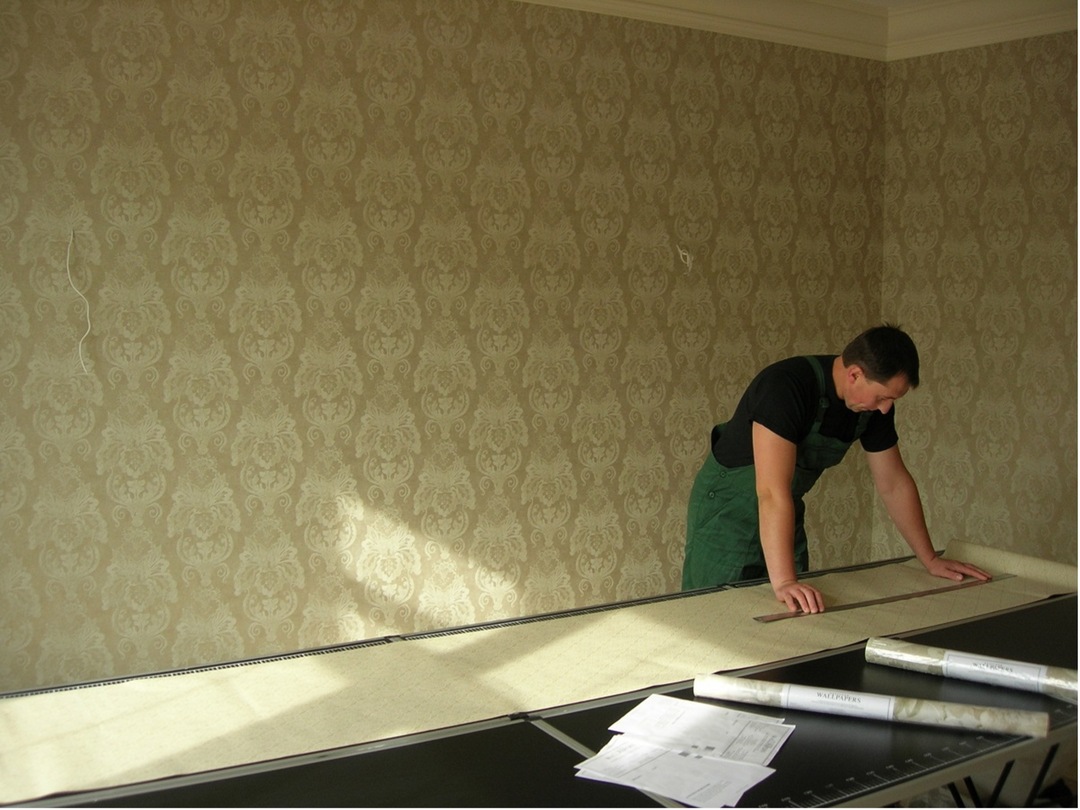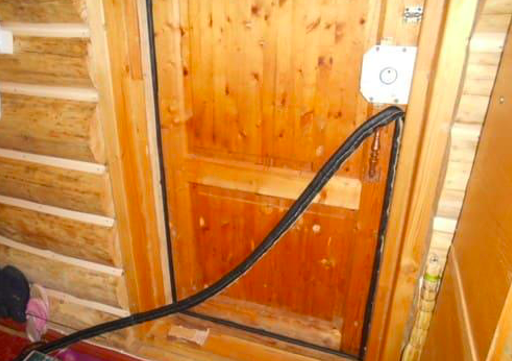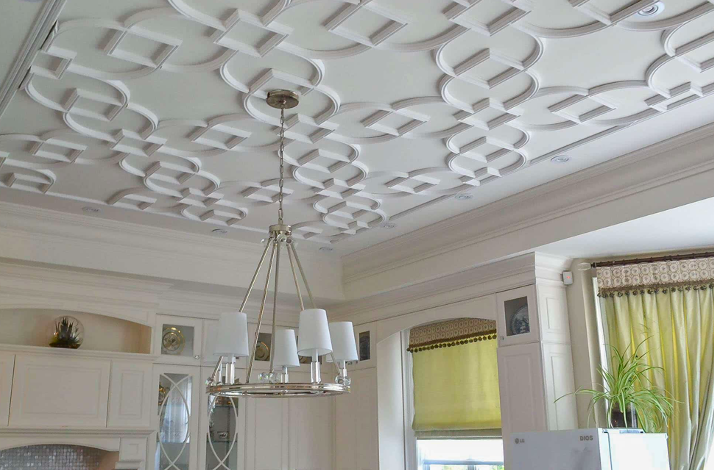The question of how to connect two heating radiators to each other is faced in cases where it is necessary to increase the battery. It is possible to increase its length by any number of sections. This is justified if the house is poorly heated, old walls, large heat losses, etc. Make a connection you can do it yourself - for this it is recommended that you read the detailed instructions described in this article.
The content of the article
- Tools and improvised means
- Step-by-step instruction
- Battery testing
Tools and improvised means
Regardless of how exactly to connect the batteries in series, you will need to prepare the following tools and supplies:
- set of wrenches;
- paronite gaskets;
- sandpaper;
- special radiator key;
- several stubs;
- gaskets for installation between adjacent sections;
- nipples (they are sold together with the section).
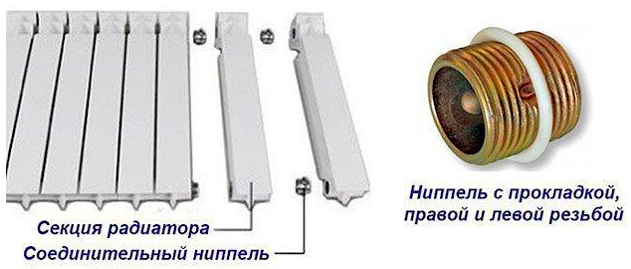
It is quite clear that the connection of heating radiators to each other is performed with a completely blocked battery. This is convenient to do if there are upper and lower taps. In their absence, it will be necessary to block the entire riser, for which they first obtain permission from the management company. Since some of the water will inevitably flow out of the pipes and the radiator itself, you should take care of rags and basins in advance.
Step-by-step instruction
Serial connection of heating radiators is quite simple. First you need to calculate how much you need to increase the battery. If there are only a few sections, they are increased, and if, for example, by 16, then it is easier to put 2 batteries, because the maximum number of sections on one radiator is exactly 16. If you wish, you can figure out how to connect two heating batteries to each other.
But most often at home it is only necessary to build up the radiator into several sections. To do this, they act like this:
- They turn off the taps, remove the battery and drain the water, put it on the floor on pre-spread clean rags.
- If the battery has not been cleaned for a long time, it is taken to the bathroom, on the bottom of which rags are also placed (so as not to scratch the enamel). The series connection of heating radiators will only work if the walls inside them are clean.
- Cleaning liquid is poured into the battery, for example, "Medesk" or "Metalin T" and allowed to stand for several minutes (according to the instructions).
- Then they are washed with a moderately strong stream of water, after removing the shower head. Thanks to this, the connection of the radiators to each other will really increase the temperature in the room.
- Check the integrity of the original thread at the ends, clean the edges with sandpaper. If the connection is clean, simply wipe it with a rag to remove dust, because it can also break the tightness.
- Now you can prepare for the start of the serial connection of the radiators. The radiator is placed on the fabric on the floor, one or more additional sections are placed next to it in exactly the same position.
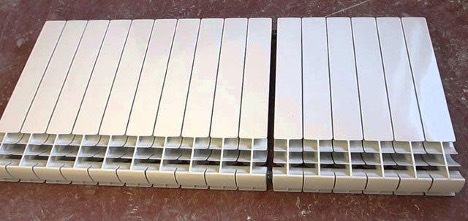
- The way how to connect 2 heating batteries to each other, or to build up sections, is the same. To do this, it is necessary to move the sections, after placing the nipples included in the kit between them, as well as paronite gaskets.
- In order to make the connection of aluminum radiators reliable, the nipples are screwed “on the live”, i.e. just planted, but not completely. At the same time, it is better to work together - the second person will evenly pull the sections together. This should be done using a radiator key to connect the radiator sections.
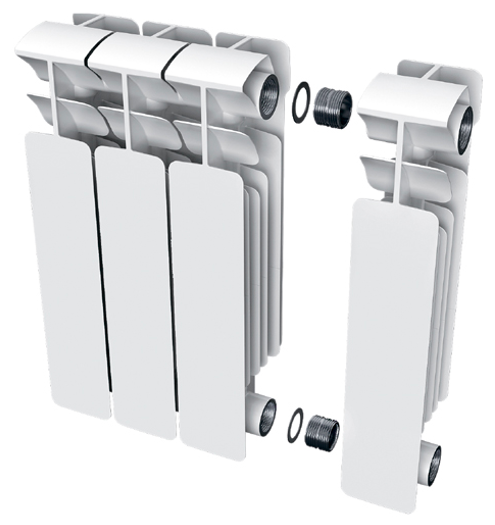
- It is necessary to carefully inspect the structure and make sure that there are no distortions. If everything is in order, make the same number of turns on both sides so that the battery connection is completely sealed.
Battery testing
Now it’s clear how to connect the heating radiators. It remains to figure out only how to check the correctness of the work. The main requirement is the tightness of the system. For testing, a strong stream of compressed air is injected, i.e. in fact, they do crimping at home. For this you will need:
- small pipe (diameter 15 mm);
- pump for inflating car tires (equipped with a pressure gauge);
- car tire nipple.
The connection of sections of aluminum radiators or bimetallic products can be considered sealed after successfully passing such a test:
- A pump is connected to the nipple.
- A plug is placed on one of the radiator holes.
- Turn on the pump and pump air into the battery, making sure that the pressure on the pressure gauge reaches 1 atmosphere (corresponding to 1 bar).
- Listen carefully to the battery. If there is a whistle, then the tightness is definitely broken. To accurately determine the place, you can apply a concentrated solution of soap to the surface - when air is injected, it will begin to foam.
- If a poor-quality series connection of radiators is found, tighten the nipples as tightly as possible. It happens that this does not help - then the gaskets will have to be replaced.
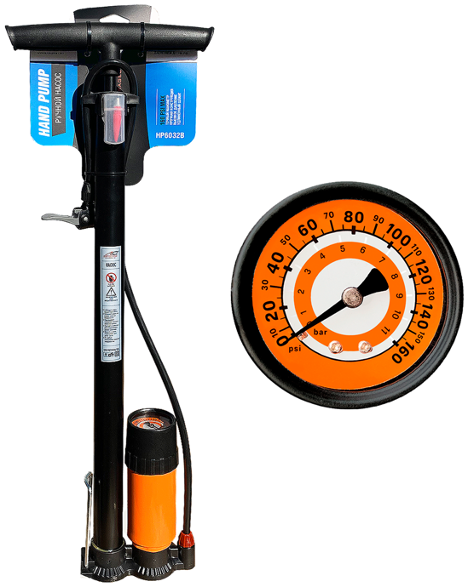
Thus, you can build a radiator yourself, this does not require special skills or equipment. But it is very important to check the tightness of the system, for example, using a car pump. If it is not, you need to invite a specialist. You can use the heating system only after it becomes clear that the battery is absolutely tight.
